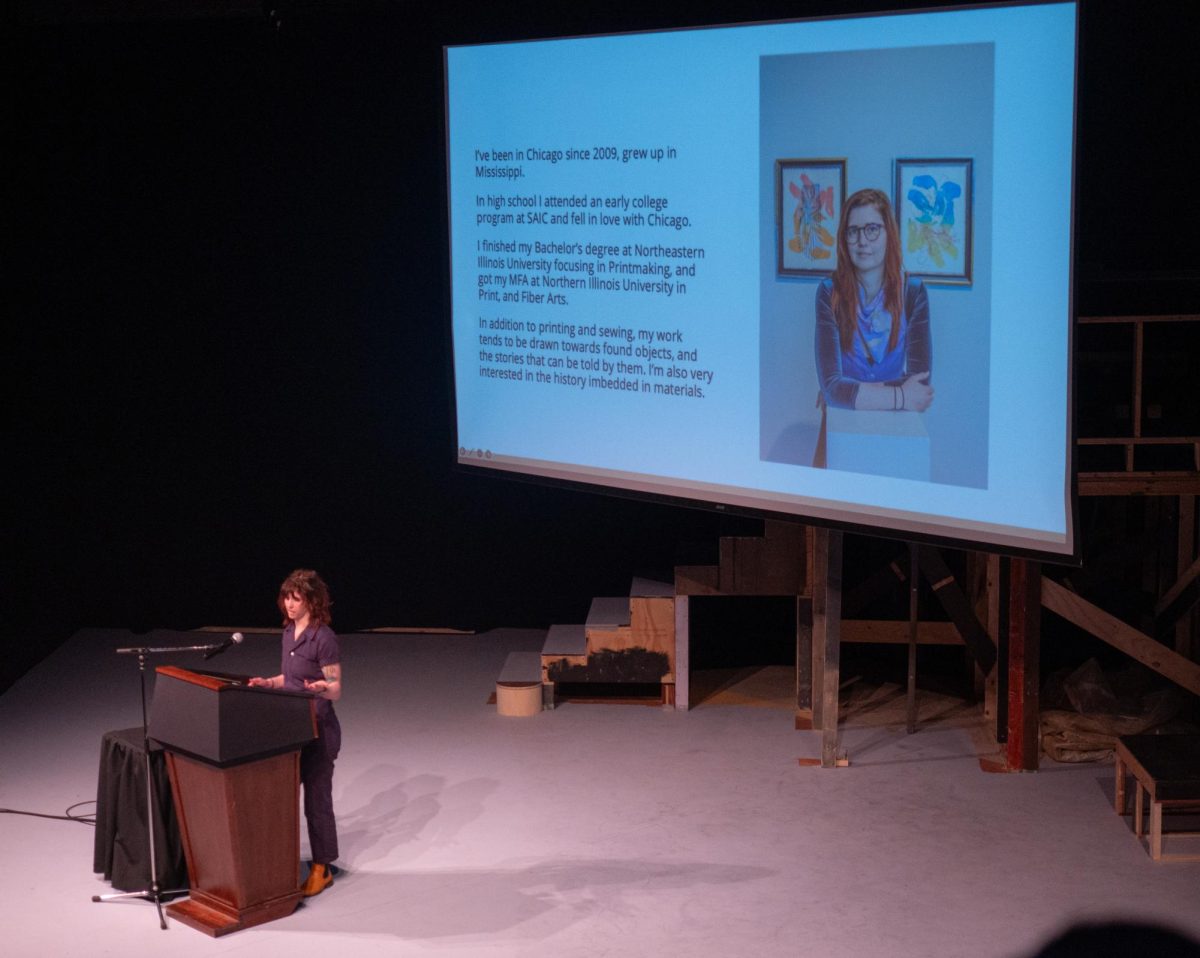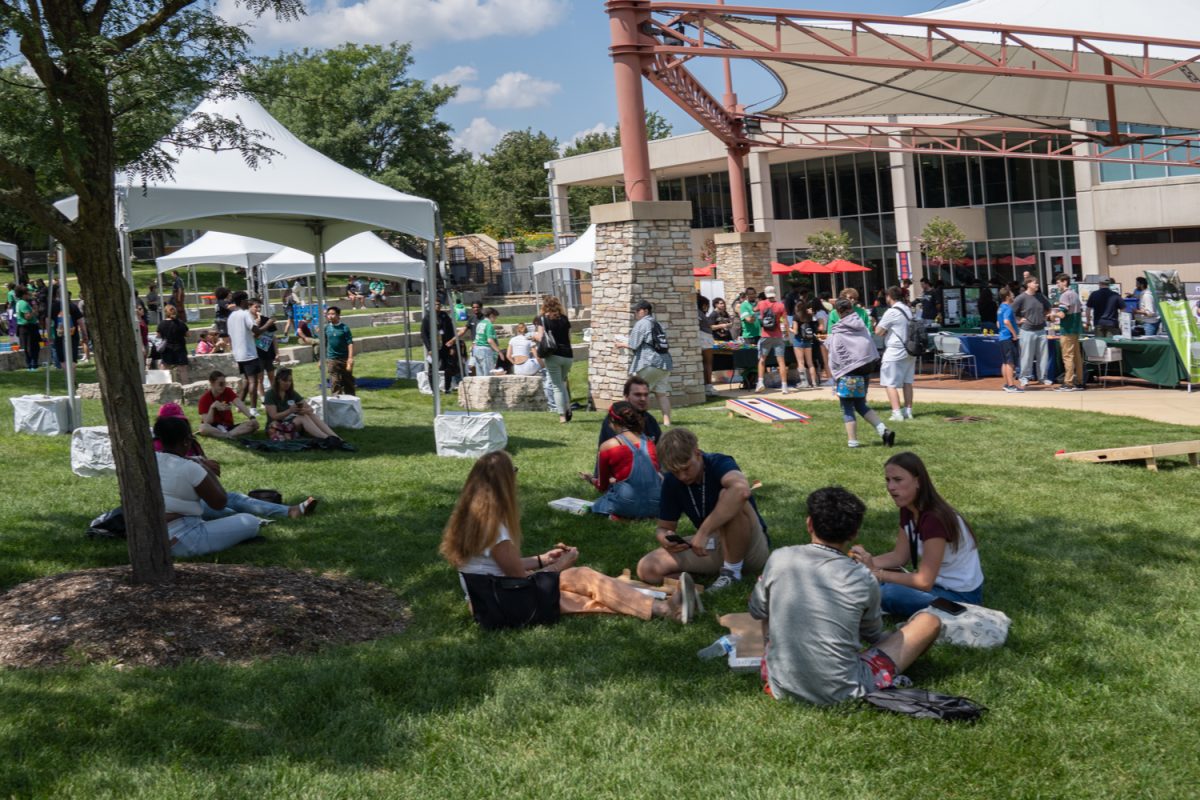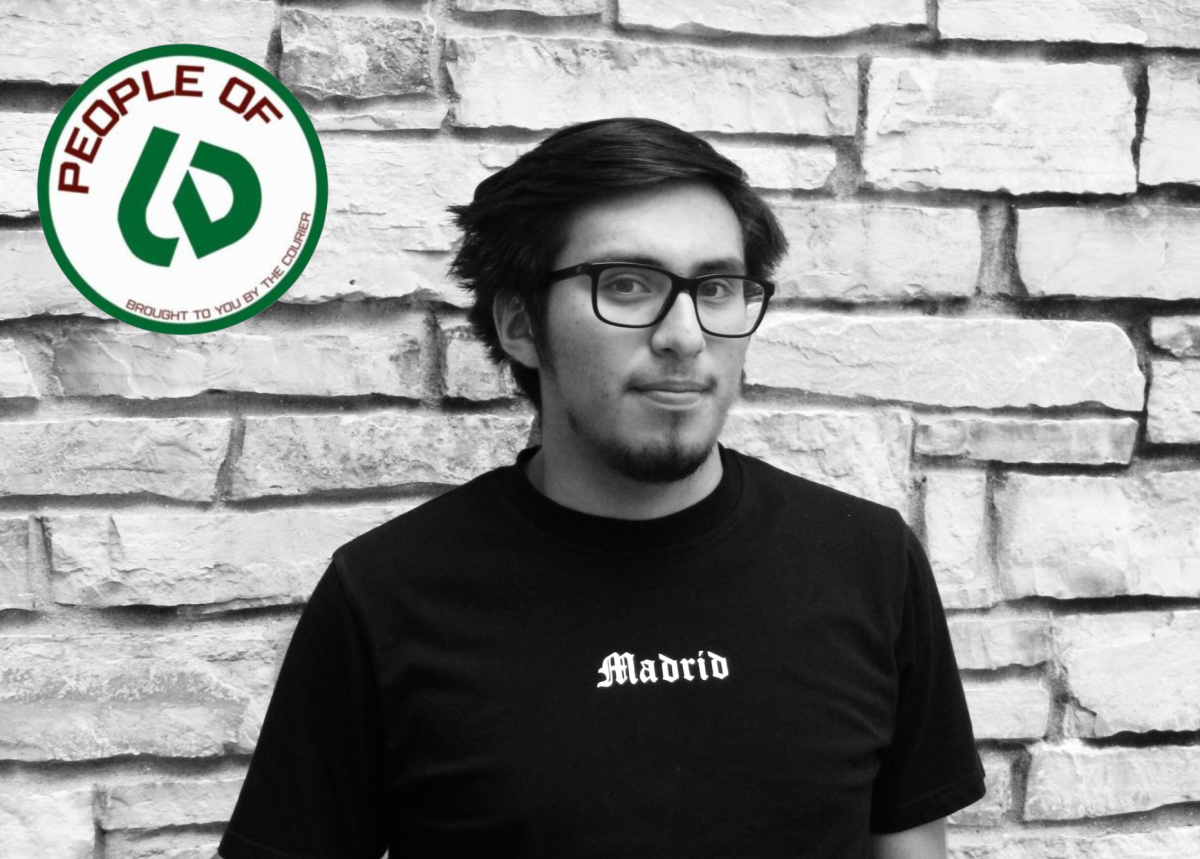When artist Millicent Kennedy’s textile class instructor introduced them to sewing objects into quilts, they were taken by the idea. It wasn’t just the act of sewing objects into quilts that captivated them—it was the realization that each stitch could carry stories of labor, loss, memory, and so many other themes. This practice influenced the trajectory of their future work significantly.
Now Kennedy sews modern objects into handmade quilts and fabrics to bridge a gap between past and present, preserving elements of an ever-changing world through art by incorporating ancient artmaking practices with modern-day objects.
Kennedy visited College of DuPage’s McAninch Arts Center on Oct. 15 to present and discuss their artwork, including the materials used and the inspiration behind their pieces. To Kennedy, sewing objects not typically incorporated into fabric and quilts served as a means to preserve and archive, as well as evoke wonder about the stories of generations past. Objects are often chosen based on themes such as labor, luxury, mourning, and memory.
“I really wanted to think about what it means to hold something with many stitches,” they said. “And what it means to create something into a fossil. What do the materials chosen tell us? And how can it engage with space sculpturally?”
Kennedy earned their bachelor’s degree from Northeastern Illinois University and an MFA from Northern Illinois University, where they currently teach. They also have a background in skills such as screen printing, dyeing, box making, and fiber arts.

Kennedy has sewn a variety of naturally occurring objects directly from nature into the fabric, from river rocks to bones to fossilized megalodon teeth. They have also diligently collected various discarded or broken objects, many of which were donated by friends and family, and sewn the components of such objects into fabrics. This can include disassembled calculators, pencil sharpeners, surgical instruments and tape measures.“I think time spent with something leads to reverent reflection on it,” they said. “I’m interested in how some things are archived while others are forgotten, the tension between tradition and modernity, and the power of seizing the means of production that is possible with older technology.”
Enana Abdulhussain, a student at College of DuPage, is an art hobbyist herself. She was intrigued by Kennedy’s unique fusion of various art mediums, particularly the fusion of natural objects with hand-sewn fabrics, which gives the objects a rejuvenating quality.
“The art combines both the cold nonliving and a sense of warmth,” she said. “The rocks and fossils are combined with the unlikely partner of a quilt using soft materials such as silk and cotton. The addition of color breathes life into the art pieces.”
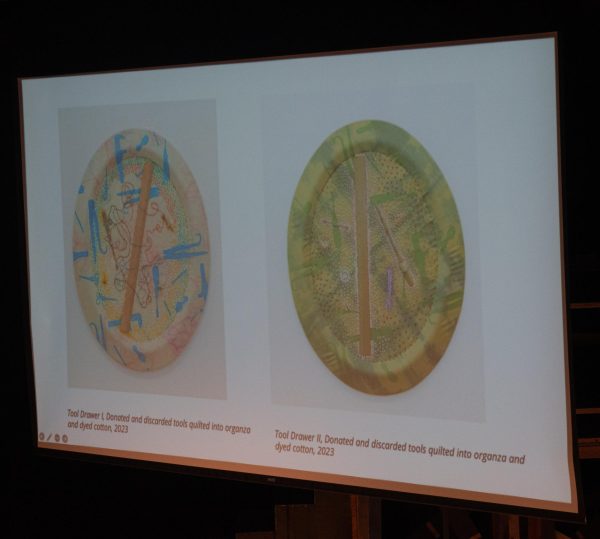
The reviving quality in the colors of Kennedy’s fabrics may be attributed to their ability to hand-dye their own fabrics using natural dyes. Kennedy mentioned their experience attending a dye workshop in Nashville. Deeming dyes to be “transformative” for their artwork, Kennedy has derived clay from natural substances such as indigo leaves, clay, wood and rust water.
Kennedy pointed out the soothing qualities of the natural dye-making process, pointing out that it can bring people together when done in a group.
“[There is] something very beautiful about the way that you use natural dye if you are making it a communal process,” they said. “We have various things you would use in natural dye to give a sense of the physical experience of working with these as a meditative quality.”
Abdulhussain was moved by the idea of providing new life to fossils or discarded objects. Kennedy’s work reshaped the way she viewed art in its ability to redefine objects in the scope of time.
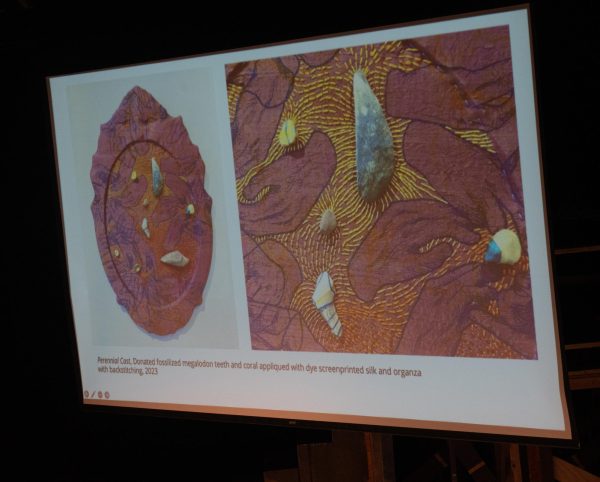
“The art pieces manage to bring elements together I would have never thought could be brought together and rejuvenate the older elements,” she said. “It shows me how art can breathe life into what might have been considered dead or waste.”
Kennedy hopes to invoke a sense of introspection and desire for historical preservation within those who view their artwork.
“I hope [those who see my artwork] consider what they would like to archive, or reflect on with their labor, and what about them and their family and friend groups should be remembered,” they said. “We all have such a dynamic part of the human story to tell in our own ways.”
More of Millicent Kennedy’s artwork and background can be found on their website at millicentkennedy.com.
The College of DuPage McAninch Arts Center will be hosting another Visiting Artist event from 1 to 2 p.m. on Nov. 7, 2024, at the Belushi Performance Hall. It will feature artist and educator Gracelee Lawrence.



